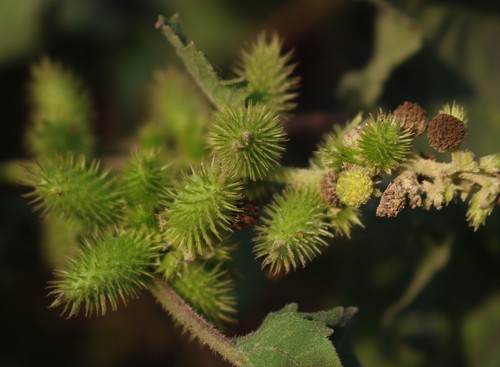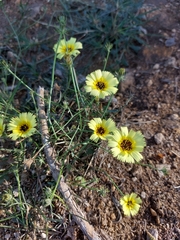Common cocklebur
Xanthium strumarium
Xanthium strumarium, commonly known as common cocklebur, is a fascinating plant species that belongs to the Asteraceae family. Typically found in a range of habitats, including disturbed lands and by the sides of roads, it is an annual plant well-known for its distinctive bur-like seed cases.
The plant can grow up to 1.5 meters high and is characterized by its rough, hairy stems and leaves. The leaves are broad, triangular to heart-shaped, and possess serrated edges. In the Comunidad Valenciana, it is sometimes referred to as "xabó" or "lapa." This plant is often regarded as a weed due to its rapid growth and ability to thrive in various conditions.
During the flowering period, Xanthium strumarium produces small, inconspicuous flowers that are primarily greenish. The true uniqueness of the plant lies in its fruits, which develop into oval-shaped burs covered with hooked spines. These burs easily cling to passing animals or clothing, aiding in seed dispersal.
Below is a quick list of key features of the Xanthium strumarium:
- Habitat: Thrives in disturbed soils, roadsides, and open fields.
- Height: Can grow up to 1.5 meters tall.
- Leaves: Large, triangular to heart-shaped with serrated edges.
- Flowers: Small, greenish, and inconspicuous.
- Fruits: Oval-shaped burs with hooked spines.
Despite its sometimes unwelcome presence, the common cocklebur plays a role in the local ecosystem, providing habitat and resources to a variety of organisms in the Comunidad Valenciana. It is important to take note of its characteristics, especially for those involved in agriculture and land management, to manage its spread effectively.







